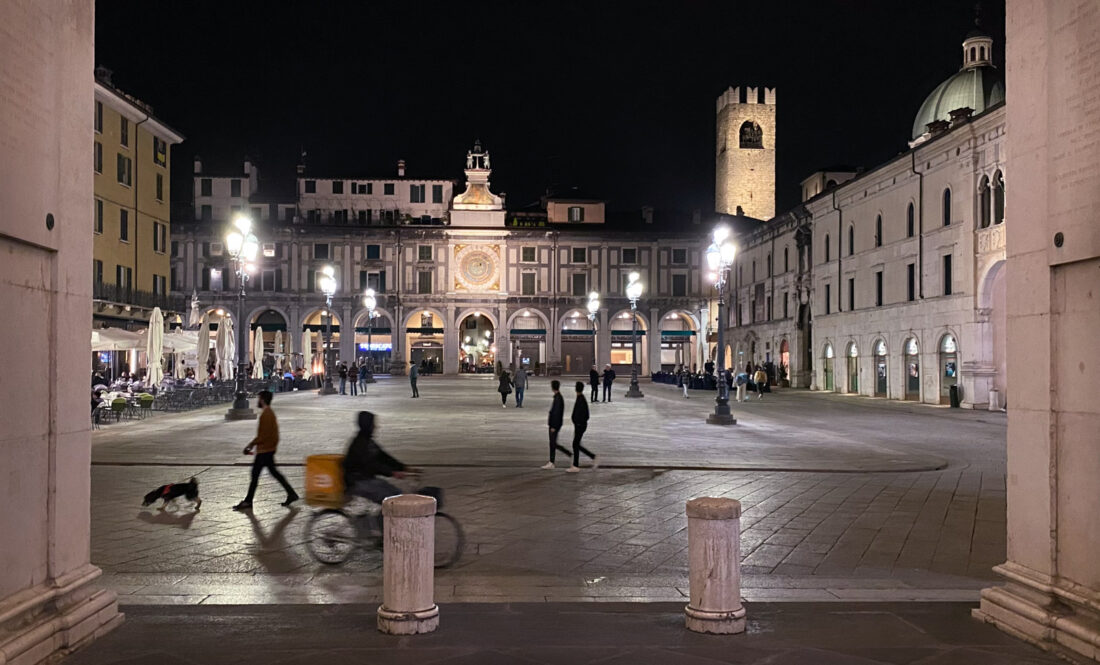
Just go: Brescia
An unexpected visit to Brescia revealed a delightful town often overshadowed by its neighbors—Venice, Verona, Padua, and Milan—but packed with beauty, history, and great food.
We haven’t even hit May and yet friends are reporting epic crowds in all the usual suspects—Venice, Florence, Rome, Cinque Terre, Amalfi Coast… As special as all of these places are, when you can’t even walk down the Spanish Steps in Rome because there are too many people it takes all the pleasure away, at least to me. One of the joys of living in Italy is the seemingly limitless supply of beautiful and fascinating towns to visit that are still uncrowded—and we accidentally found one last weekend.
John and I are still trying to master the Italian medical system and when a friend suggested we check out a modern clinic in Brescia for some routine doctors’ appointments we decided to make a night of it. I knew almost nothing about Brescia except that it was one of the cities on the front line when Covid arrived in Italy in January 2020. Arriving with no expectations we couldn’t believe what we’d happened upon—a beautiful town filled with architectural gems, a history of diverse cultures, and some great food. Best of all, we heard almost no English and saw almost no tourists despite it being a UNESCO World Heritage site.
Brescia sits at the foot of the Alps, whose snow-covered peaks were visible, and close to Lake Garda and Lake Iseo. Although it is a city of 200,000 and surrounded by industry, the old town is compact and beautiful. We wandered around with no agenda and happened across one beautiful little piazza after another ringed by restaurants and bars serving aperitivi at outdoor tables.
What makes Brescia so fascinating is its layers of history. There are remnants of Bronze Age settlements, later the first part of the city was founded in 1200 BC by either the Etruscans or the Ligures people, then it was inhabited by the Celts, followed by the Romans, then the Visigoths and Attila the Hun, then the Lombards, on to Charlemagne and French rule, then the Venetians…and this only gets us caught up to 1512. These layers play together in intriguing ways.
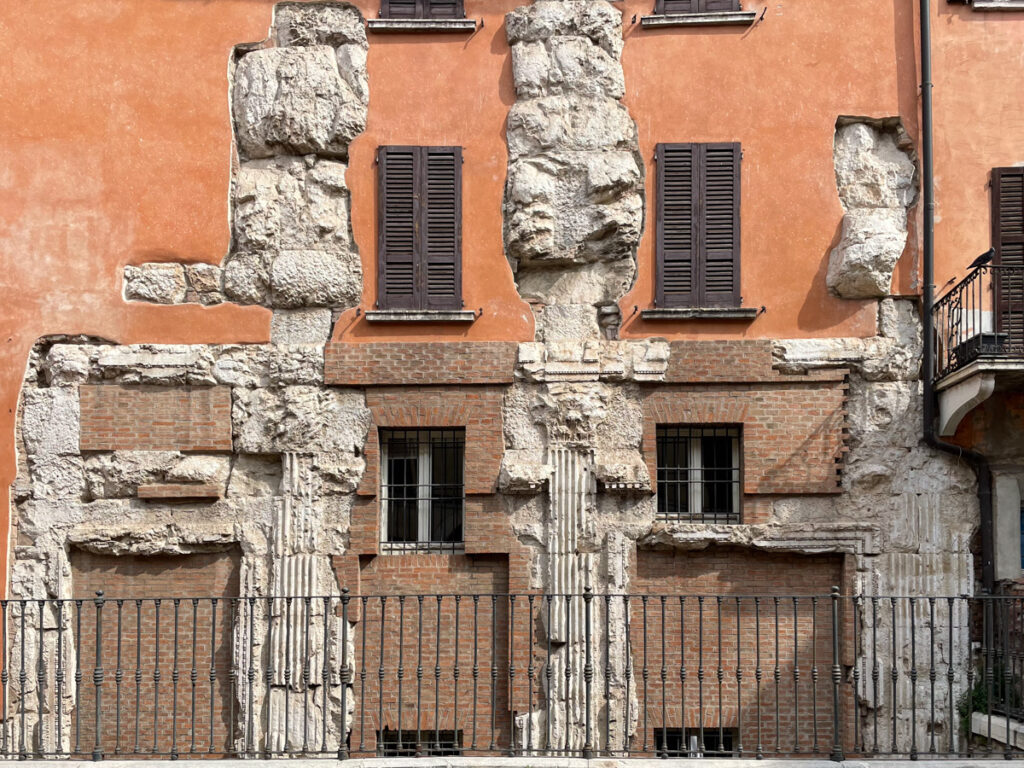
The ancient old town is surrounded by palazzos built in the Renaissance. For dinner we decided to go to Veleno, located in one of these palazzos built in the early 1700s. The food was a bit uneven, but the decor was stunning. There is even a Michelin-starred option in town.
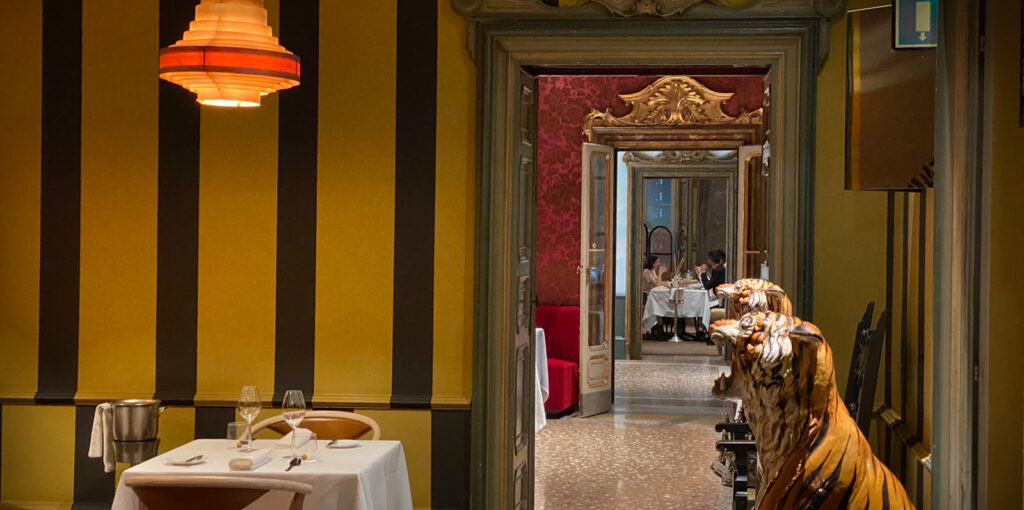
Our morning stroll took us up to the castle and its extensive gardens, built on top of the Bronze Age settlement. As one of the largest castles in Italy it dominates the hill that overlooks the town. Then we wandered into a stunning piazza where two cathedrals were jammed next to each other next to a palazzo with a huge bell tower where the city’s offices are housed. The Duomo Vecchio (Old Cathedral) sits snug up against the Duomo Nuovo (New Cathedral), started in 1604. The Duomo Vecchio is a stunning example of a round Romanesque church dating from 1100, but my favorite part was going into the crypt and finding a complete tiny church from 762 with a forest of columns supporting the low ceiling.

At that point we were satiated but decided to push on and go to the Santa Giulia Museum, housed in a monastic complex of Longobard origin. In its 150,000 square feet the museum houses archeological finds from the Bronze Age on. But it’s not just about things in cases—there are two excavated Roman houses, the Longobard basilica of San Salvatore (8th century CE), the Choir of the Nuns (early 16th century) and the Romanesque Oratory of Santa Maria in Solario (12th century), where the nuns kept the monastery treasure, all skillfully incorporated into the museum.
Despite being spacey and hungry we had a reservation at the archeological park which is part of the huge museum complex and we were told by several people that we cannot be late. We go back outside and walked past a large Roman theater to meet our guide in front of the towering Roman Capitolium (73 CE).

Our guide assembled our group of twenty and took us down a staircase into a small room to watch a film for 5 minutes. This isn’t just about information—we were in an airlock where our germs and the humidity and temperature are being controlled before we can go into the next room which is a Roman sanctuary dating back to the early decades of the first century BCE with vibrantly-painted frescoes—some of the best preserved other than at Pompeii.
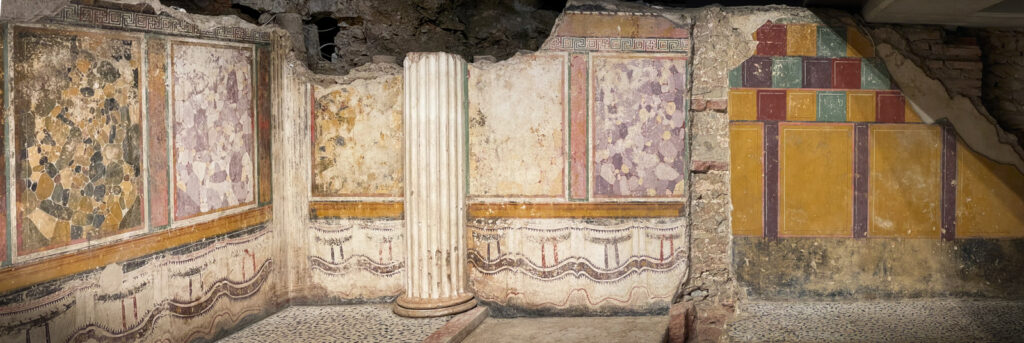
After we all have our fill we go back up and into the Capitolium where we again entered an airlock before we could see the Winged Victory, a bronze statue from the early years of the first century BCE, high on a pedestal in all her 6 foot 6 glory.
Lunch, a quick wander through a pristine Renaissance piazza, the Piazza della Loggia, the oddly beautiful Piazza della Vittoria, an Italian art-deco piazza created in the late 1920s, then home, exhausted but barely having scratched the surface of things to do.
Brescia is also home to the famous Mille Miglia vintage car race where some of the most rare antique cars in the world leave museums and are driven for 1,000 miles in Italy every year. Brescia and Bergamo are sharing Italy’s “capitals of culture” designation for 2023.
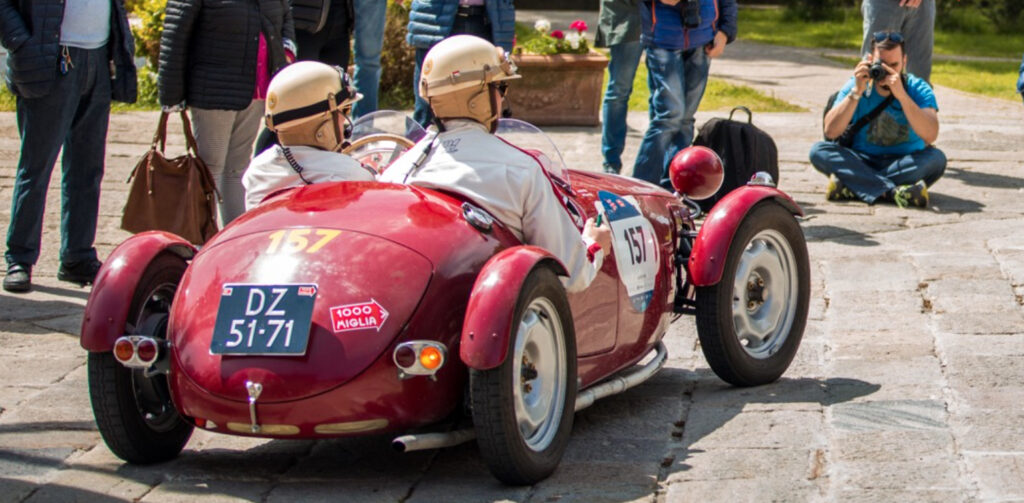






No Comments